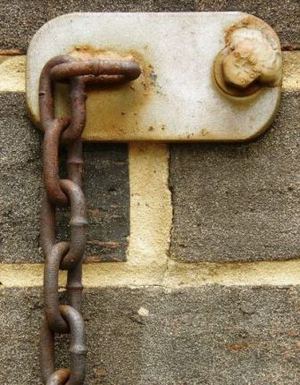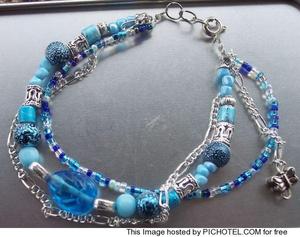When you’re writing an article, you’ll find yourself looking up information and finding great websites with supporting data on your subject matter. Sometimes you’ll end up quoting directly from an article (max of 50 words), and other times just paraphrasing. Other times yet, you’ll write different articles related to the same subject, such as dieting, or decorating, and want to provide a way for your reader to go to all of your articles in the series. Each of these situations bode well for providing an active link for your reader to use to go to that other resource.
What is an Active Link or Hyperlink?
A “active” link, also known as a “hyperlink” is one that can be “clicked” to go to another webpage on the internet. Don’t get an active link confused with a website address. For instance, I could tell you that you can go to Facebook.com to sign up for an account, or I could tell you to go to www.facebook.com to sign up for an account. The second option gives you the active link to get there.
Why Provide Links?
Active links provide readers the ability to visit another webpage easily right from your article. As well, it validates you as a writer who does his research. When the links you provide are to your other articles, you improve the chances that your reader will read them too, increasing page views!
Gather Links When You Gather Data
When I am doing research for an article I “gather” links as I go along. What I mean by this is that I save an active link of the webpage that contains information that I want to reference in writing my article, much like ‘dog earring” pages in a book.
For instance, let’s say I want to write an article about Poison Ivy. When I type “poison ivy” in the search box, I see one search result that reads “Poison Ivy, Oak, and Sumac Information Center” and when I visit that web page, it provides facts, pictures and remedies. So I think, this looks like an article I can reference when I am putting the article together. I also see that Wikipedia has information that might be helpful, and a little further down the list I see a link to “Poison Ivy Treatment Guide. To make things easier for me, I open a word document, which I will be using to write my article, and start pasting the URL addresses from each of these resources at the top of my word doc.
How to Copy a URL Address
If you don’t know how to copy the exact URL for a specific page, it’s simple. Open the webpage you want to save for reference. Right click on the information in the address bar (the URL that starts with http://) and right click on “copy” in the drop down box. Then go to your Word document, right click and choose “paste” in the dropdown box. Voila! You’ll have a URL that would look something like this:
http://www.google.com/search?q=poison+ivy&rls;=com.microsoft:en-us:IE-SearchBox&ie;=UTF-8&oe;=UTF-8&sourceid;=ie7&rlz;=1I7SUNA
Just pasting the URL on your Word doc doesn’t activate it. To activate it, click on the space right at the end of the URL and then hit enter. You’ll see the link turn blue and underlined like this:
http://www.google.com/search?q=poison+ivy&rls;=com.microsoft:en-us:IE-SearchBox&ie;=UTF-8&oe;=UTF-8&sourceid;=ie7&rlz;=1I7SUNA
Now it is activated! I continue to research and copy URL addresses on my Word Document until I feel that I have adequate resources. Then, as I am writing, I go up to the link I need and click on it to go to that webpage. As well, if I want to provide this link in my article, I have it handy.
Note: In order to follow the link from a Word Doc, you’ll hold down the Ctrl key and click on the link.
Embedding a Link into Your Article
Okay, now look at that active link again. You could just paste it the way it is into your article, and your reader could click on it and get to the page you intended. However, that “naked” link looks very unprofessional in the middle or end of an article. Don’t do that!
Here’s what to do instead. When you are in the writing template of a publisher’s site, look at the tool bar above the text box and locate the icon that looks like a link in a chain. If you are writing in AC and don’t see a toolbar above the text box, click on “turn text editor on” which should bring it up. (Don’t turn it back off!)
Pick an appropriate word or phrase that makes sense to embed your link into, highlight it and click on the “link” icon. A Link box will open up in a pop-up window. In the URL box, right-click and hit “paste”. If you see the URL in the box, hit OK. When the box closes, you’ll see that the word(s) you highlighted are underlined and blue. You just successfully created an active link and embedded the address!
Where to Embed the URL?
Here are three logical ways to embed a webpage link:
1. If you have referenced an article by it’s title, you could embed the article link in that title, For instance let’s say you wrote: “If you have a number of photos that relate to one of your articles, read Jan Peterson’s article “When to Link Slideshows to Your Articles” for ideas.” Online readers understand that if they click on the blue words, they’ll go to the article.
2. Or you could embed a link logically into one word or a phrase like this: If you think you need poison ivy treatment, take steps immediately. (The link takes the reader to an article about treatment options).
3. To provide links to your other related articles, you can embed into a logical word or phrase in the body of your article, or type at the end of your article something like, “Related Reading:”, and then list your articles, embedding each article’s URL address into it’s title. (See how I’ve done this at the end of this article.)
Once you get the hang of it, embedding links to other webpages on the internet will become second nature. And you’ll find that your articles will look more professional and be more helpful to readers! Most importantly, if done wisely, you might increase your pageviews. Cha-ching!
Related Articles About Writing Online:
“Writing Online 101
“How Much Money Can Online Writers Make?”
“When to Link Slideshows to Your Articles”





